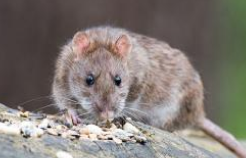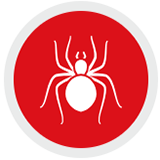Learning Center
Termites
Just say the word termite and homeowners cringe. These tiny wood-eating pests are capable of great destruction, causing an estimated $5 billion in damage annually.
Of the more than 2,500 known species of termites, 50 of them are found in North America, predominantly located in warmer climates. Termites have been in existence for over 100 million years. Even though they are commonly mistaken for ants, these insects are more closely related to wood-eating cockroaches.
Termites are social creatures that live in colonies (also called termitariums or termitaries) consisting of castes, or specific groupings of its members by function:
- Reproductives: Also called swarmers, the role of this group is to reproduce, perpetuating the colony. Each colony has at least one queen and king reproductive, though it may have more.
- Soldiers: These termites are tasked with protecting the colony from predators, which are typically ants, termites from another colony or other insect-eating creatures.
- Workers: Workers feed the queen and king, care for young termites, and dig tunnels that make up the colony’s nest.
On average, a mature subterranean termite colony consists of about 60,000 termites, though termitariums can grow to 2 million members. Drywood termite colonies tend to be smaller, with less than 5,000 termites. Termites are pervasive — the weight of all the termites in the world is greater than the weight of all the people in the world!
Types of Termites
What do termites look like?
A termite’s body consists of a head, thorax, and abdomen. While they resemble ants, termites do not have a narrow waist and their antennae do not bend. Reproductives can grow to be an inch in length, but the average termite is 1/4” to 1/2” in size. Reproductives are darker in color than other members of the colony and have two pairs of wings that allow them to fly. Soldiers have large, dark heads that secrete a toxic substance and strong mandibles to ward off enemies. Workers are a milky pale color and have smaller mandibles used for eating through wood and building.
Reproductive termites mate and the queen can lay as many as a thousand eggs each day. These eggs hatch into larvae. In the larval stage, termites shed their outer shell multiple times (a process known as molting) to determine if they will be workers, soldiers, or reproductives. Only reproductives ever fully mature to become adults, while workers and soldiers retain larval qualities, including sterility and blindness.
During the spring and early summer, reproductives swarm, leaving their colonies to find a mate. Once they have done so, a king and queen will then seek out a location to start a new colony. When they are settled, these reproductives then shed their wings and the queen begins to lay eggs. Male and female reproductives work together to feed and care for their offspring.
What are the unique characteristics of termites?
Termites feed on cellulose — an organic compound found in plant matter and wood — prevalent in the materials used to build homes. Termites eat continuously. The average subterranean colony can devour one foot of a 2″ x 4″ board in a matter of months, which compromises the integrity of the structure of your home.
Because most termites are blind, they communicate with one another through pheromones. Each colony, and each caste within that colony, has a unique chemical scent. Termites will also notify others of a threat by beating their heads against the walls of the colony to create a vibration. This vibration signals the soldiers to come and defend the nest against the invader.
What are the habits of termites?
Termites tend to be most active during warmer months, but their feeding never ceases regardless of weather. Swarming season — when reproductives seek out partners — typically occurs in the spring or summer, depending on temperature and humidity.
Where are termites commonly found?
Termites can be found anywhere they have access to cellulose-based materials. In general, they prefer structures made of wood, decaying or fallen trees, and soil. Subterranean termites cause 75% of home damage. They build nests underground but will migrate to other areas in search of food. As their names imply, drywood termites seek out dry wood, while dampwood termites like moist wood. Drywood termites are also called furniture termites because they tend to congregate in furniture. All three types are found frequently in Southern states.
What are the risks of a termite infestation?
Because termites feed exclusively on cellulose-laden materials, wood and other construction materials offer a rich source of nutrition for them. Nearly one out of every 25 homes in the United States are thought to have a termite problem. If not properly treated, termites will destroy property and can compromise a building’s structural integrity.

 (425) 318-7912
(425) 318-7912
 MY ACCOUNT
MY ACCOUNT
 425-318-7912
425-318-7912







